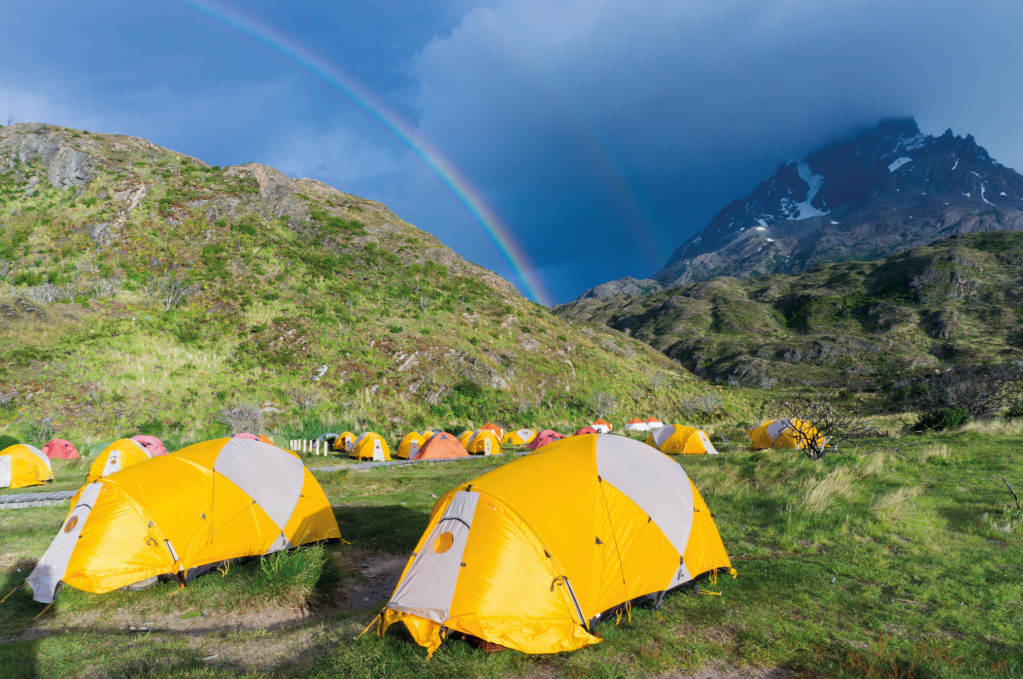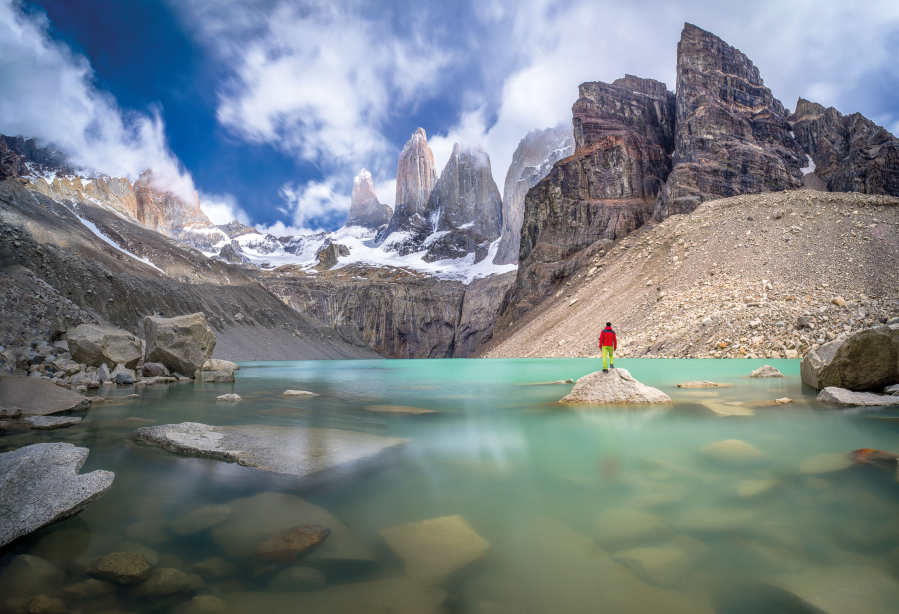The goal of the Torres del Paine ‘W’ trek isn’t to summit a mountain or circle a range. It is simply to take the trekker on a tour of one of the most beautiful landscapes in the world.
Patagonia’s Torres del Paine National Park is the kind of place where travel writers run out of superlatives. Vast towers of weathered granite rise like natural skyscrapers above lakes of translucent blue. Glaciers the size of inland seas surge and tumble down from wind-carved mountain ranges. Wildflowers sprout from foothills ranged by pumas and Andean condors. Through all this natural munificence winds the 50-mile Torres del Paine ‘W’ trek, a layercake of scenic splendour and one of the most famous long-distance walks in the world.
The goal of the W trek isn’t to summit a mountain, circle a range or reach an important landmark. It is, quite simply, to take the trekker on a tour of the most beautiful landscapes in Torres del Paine without thought to start point, end point or continuity.
Torres del Paine ‘W’ Trek: the stats
Start: Refugio Torre Central | End: Refugio Paine Grande | Length: 80km / 50 miles | Ascent: 2,730m | Season: November to March | Difficulty: Medium
The journey
“The views are to die for,” says Fran Prince, who walked the route in a semi-leisurely six days. “Hills, snow-capped mountains, miles of steppe as far as you can see. I was knocked sideways by the geology, the strange plants and the birds – I clocked up plenty of species, including Chilean swallows, Chilean flamingos and southern lapwings. In terms of the general experience, it’s hot when you walk, cold when you stop and we all ended up aching in various places!”
In payment for those aches and pains, you’ll be rewarded with an ever-changing backdrop of incredible terrain. From the Refugio Las Torres, the route rises steeply to the base of Las Torres themselves – the ethereally-shaped pinnacles that gave the national park its name. Their bald granite silhouettes are a complete contrast to the beech woods and flower-marked slopes of the French Valley and, later on, to the multi-peaked marvels of the snowy Los Cuernos, viewed across the green shores of a mountain lake. Towards the end of the trek you’ll be blindsided by the Grey Glacier, a vast river of foaming ice that marches into the waters of Lago Grey. And, in a final burst of scenic brilliance, the W trek ends with close-up views of Paine Grande, the highest peak in the national park.

The Paine Grande campsite on the ‘W’ Trek. Credit: Shutterstock
Attempt the W trek in mid-summer, and you’ll be sharing the well-trodden tracks with plenty of other aesthetes. The route never gets too overrun, though, because accommodation is limited and needs to be booked in advance (ideally, as soon as the campsite booking system opens in August). An ingenious and enjoyable way to make the experience more sustainable is to swap the flight from Santiago with a trip on the Navima passenger ferry, which takes the scenic route through the wild Patagonian fjords.
Torres del Paine ‘W’ Trek: an alternative route
If you’re particularly crowd-adverse, there’s a quieter extension to the W trek, also named after a letter of the alphabet. The 110km / 70-mile ‘O’ trek continues the W on to complete a full loop of the Cordillera Paine mountain group. The scenery is less famous but far wilder and more remote, as you cross high passes, loop around alpine lakes and surprise unwary wildlife. Camp only in designated areas and avoid the temptation to feed wildlife to leave a lighter trace.
If you want to explore other international treks of a lifetime, check out these other bucket list treks and our expert advice on how to hike them – as well as their lesser trodden alternatives.







